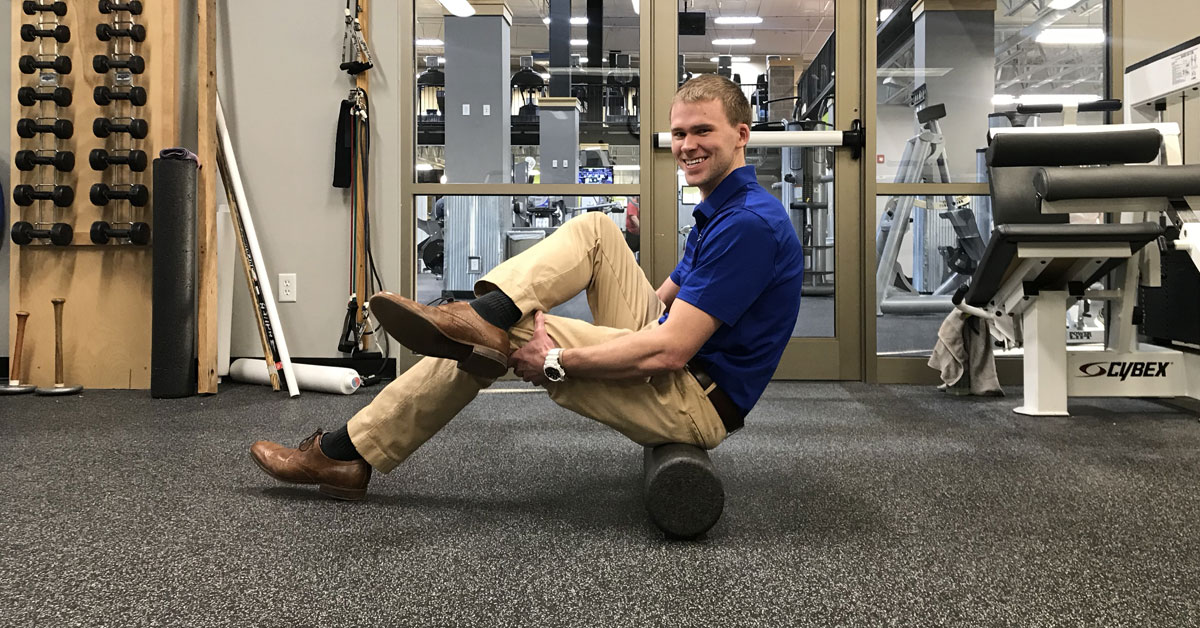Did you know that 85%-90% of people in the US suffer from some sort of lower back pain? It’s the 2nd most common reason people go to the doctor while contributing to $60 billion in healthcare costs.
Lower back pain can be caused by arthritis, disc issues or it could just be from tightness with our supporting muscles or soft tissues within that region. The first two causes are out of my scope of practice to diagnose but what I can help you with is to help you learn to use a tool called a foam roller to maybe help alleviate the back pain by rolling out the supportive muscles and soft tissues.
Foam rollers are a tool that helps to break up the connective tissue on top of the muscles called, Fascia. This connective tissue can become so rigid and tight so the foam roller helps to break that tissue up to allow muscles to breathe and become more malleable while decreasing the tension on the lower back region.
We have many foam rollers throughout the gym. They are those cylindrical black styrofoam tools that you may see laying around the elevated black mat downstairs or in their holder in the turf area. If we were to consistently use a foam roller on our lower extremities, specifically on our outer thighs and butt muscles, that may help to recover from lower back pain without having to go to the doctor for an x-ray or an MRI.
Here are some foam rolling techniques that you can start implementing today to see if it helps to alleviate some lower back pain. If pain continues after consistent usage then I would seek out one of our physical therapists next door for an injury assessment to see if you may need some therapy or a scan done to look further into the issue.
90% of lower back pain comes from tight hips, tight hamstrings, and poor core strength/stabilization.
Try these exercises on a daily basis to help improve your mobility and hopefully decrease your lower back pain. As always please seek out one of our training staff if you have questions on how to position yourself correctly.
Foam Rolling Your Quadriceps
- With the foam roller on the floor, face the floor with the foam roller just above your knees on the quads.
- Move so that the roller is about an inch nearer to the hip, and then rock side to side for 15-30 seconds. Repeat inch by inch up towards the hip.
- If the pressure isn’t hard enough, try lifting one leg up and doing it with one leg at a time.
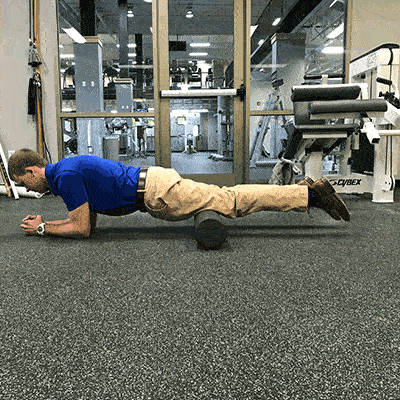
Foam Rolling Your IT Bands
- Lie on your side with the foam roller resting just up from the knee on the side of the leg.
- Move until the roller is about an inch nearer to the hip, and then rock side to side for 15-30 seconds. Repeat inch by inch moving towards the hip.
- If the pressure is too much, put more weight into your arms to decrease the pressure on your leg.
- Repeat with the other leg.
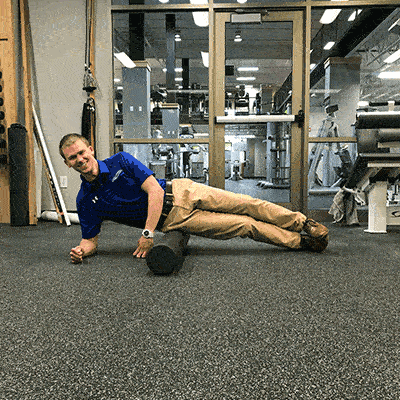
Foam Rolling Your Glutes
- Sit on the roller so that the roller is underneath the butt.
- Bring one leg across until the ankle rests on the opposite knee/thigh.
- Using your arms for support behind the roller, move the roller up and down and side to side.
- Once you find a particularly tender spot, hold the pressure on that spot for 15-30 seconds.
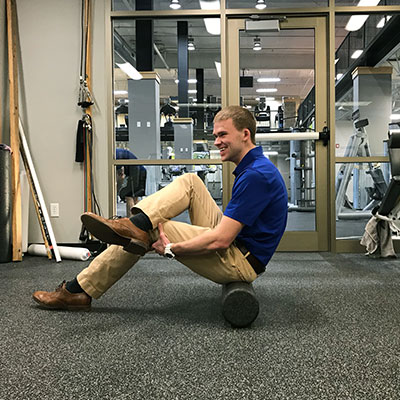
Foam Rolling Your Hamstrings
- Sit on the floor and place the roller under the thigh at the top of the hamstrings.
- Place your hands on the floor behind you for support, and maintain an upright posture.
- The leg that you are not using to roll should be bent at the knee, with foot flat on the floor – for added stability.
- Keep the shoulder set and lift your butt off the floor a few inches.
- Begin by slowly moving your body backward as you roll down the hamstrings towards the back of the knee. Stop just before you get to the end of the knee, and then slowly return.
- Continue rolling slowly up and down for a total of 45 seconds.
- Switch legs and repeat.
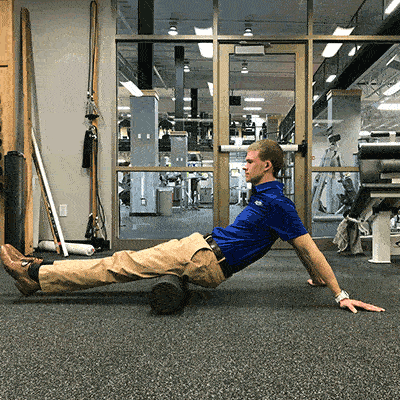
Core Stabilization (DeadBug)
*The goal is to keep the back flat during the exercise.
- Bend your knees and lift your legs into the air with your knees bent at 90-degree angles. Shoot your arms straight into the air with your wrist above your shoulders.
- Keep your arms and legs engaged and inhale as you lower opposite arm and leg toward the floor.
- Take four slow counts to lower and go as low as you can. If your lower back arches you’ve gone too far.
- Exhale, pressing your low rib cage against the floor, and take four slow counts to return to your starting position.
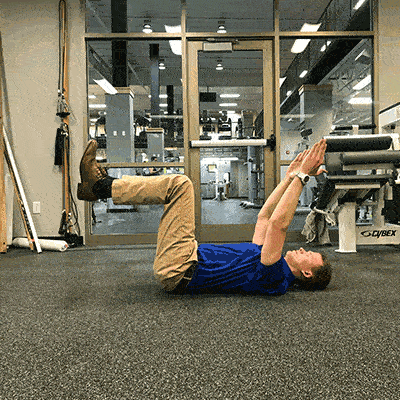
///
Want to learn more about Personal Training, Health Coaching, Nutrition Coaching, TEAM Training, or Senior Fitness/Senior Personal Training at Performance Health & Fitness? Sign up for a FREE 30-Minute Strategy Session with a certified personal trainer and we'll help you find the resources and information needed to reach your personal goals.

